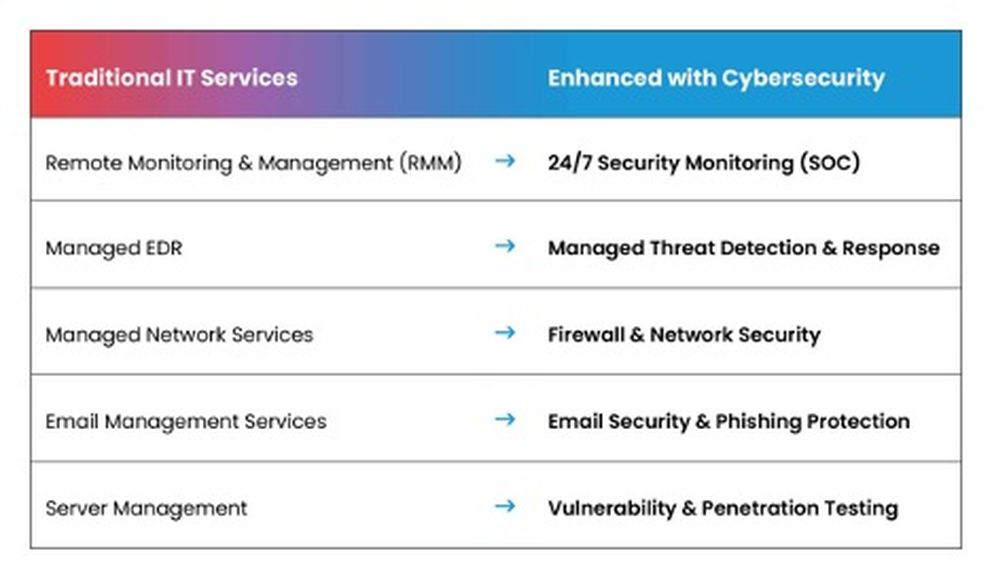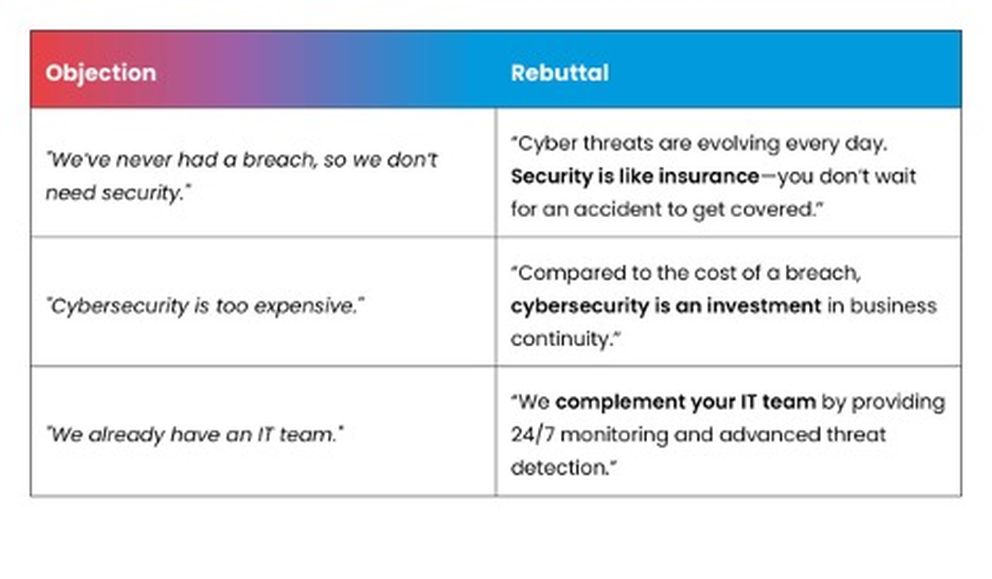Guest blog courtesy of ArmorPoint.
MSPs that fail to offer robust cybersecurity solutions risk being left behind. However, building robust cybersecurity services is only half the battle. The real challenge lies in effectively packaging, positioning, and pitching these services.
Let’s dive into how your MSP can go about selecting the right vendors, structuring your offerings for scalability, and positioning your services to solve real business problems so you can start reaping the benefits of the MSSP opportunity.
Packaging Cybersecurity Services for Success
One of the biggest challenges MSPs face is positioning cybersecurity as an essential, value-driven service rather than an optional add-on. Structuring your cybersecurity packages effectively can make a significant impact on customer adoption and long-term revenue.
Aligning Cybersecurity with IT Services
Since MSPs already manage IT infrastructure, cybersecurity should be an extension of existing services, not a separate conversation. When building out managed cybersecurity services, consider bundling security solutions with core IT offerings.
For example:

Building Scalable Packages
Not all clients need enterprise-level security, but every business needs some level of protection. Structuring packages in tiers can help clients choose the right level of security for their needs:
By moving from a tools-focused approach to a comprehensive security program, MSPs not only improve client protection but also build a predictable revenue stream.
Positioning Cybersecurity to Stand Out in the Market
Shifting from IT Support to a Security-First Approach
Selling cybersecurity isn’t like selling traditional IT services. While IT support focuses on uptime and productivity, cybersecurity is centered on risk management, compliance, and business resilience. This means MSPs must shift their messaging to align with business-critical concerns rather than just technology solutions. Instead of simply stating, “We provide cybersecurity services,” a more effective approach is framing it as, “We help protect your business from cyber threats that could disrupt operations, damage your reputation, or lead to financial loss.” This type of messaging highlights cybersecurity’s real-world impact on business stability and trust.
Another crucial aspect of positioning cybersecurity effectively is avoiding fear, uncertainty, and doubt (FUD) in sales conversations. While it may be tempting to use fear-based tactics, modern buyers respond better to value-driven messaging. Rather than focusing on worst-case scenarios—such as stating, “Ransomware attacks are increasing—you could be next!”—a more strategic approach is to emphasize the benefits of cybersecurity, such as “A proactive cybersecurity strategy ensures business continuity, compliance, and customer trust.” By shifting the focus from fear to business resilience, MSPs can engage decision-makers more effectively and position themselves as trusted security partners rather than reactive service providers.
Articulating Your Unique Selling Proposition (USP)
What makes your cybersecurity services different from competitors? MSPs should clearly define their Unique Selling Proposition (USP) using these key areas:
By framing security services around customer pain points, you can differentiate your MSP and establish credibility in the market.
Pitching Cybersecurity: From Awareness to Action
Training Sales Teams to Sell Security
Selling cybersecurity requires a different skill set than selling IT support. MSP sales teams should be trained on:
Using real-world case studies, testimonials, and live security assessments can help make cybersecurity more tangible for decision-makers.
Overcoming Common Objections
Many SMBs hesitate to invest in cybersecurity due to cost concerns or misconceptions about their risk level.
Here’s how to counter common objections:

Leveraging Partner Support to Drive Sales
MSPs don’t have to sell cybersecurity alone. Partnering with a strong security vendor or MSSP can help MSPs access:
Rather than competing with established MSSPs, partnering with the right vendors can help MSPs scale cybersecurity services efficiently while maintaining customer trust.
Conclusion
Transitioning from MSP to MSSP is a strategic move that requires building the cybersecurity services your clients are looking for plus finding the right packaging, positioning, and sales approach. By conducting a gap analysis, bundling cybersecurity with IT services, articulating a clear USP, and leveraging vendor partnerships, MSPs can successfully expand into managed cybersecurity services and drive long-term growth.
Want to take your MSP’s cybersecurity sales to the next level? Download our MSP to MSSP eBook for a deeper dive into building a scalable, high-value cybersecurity business!




